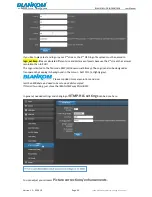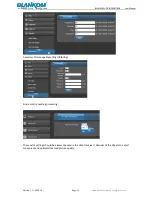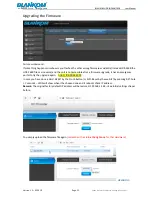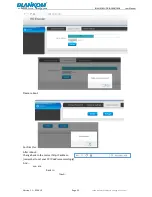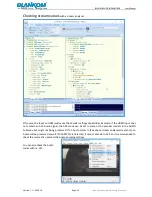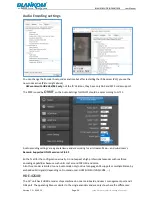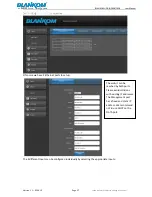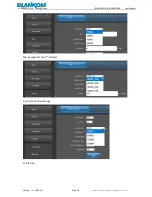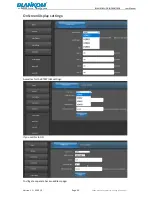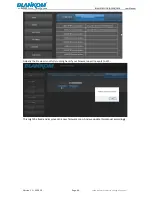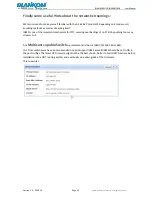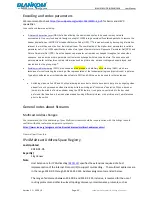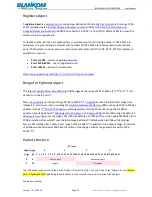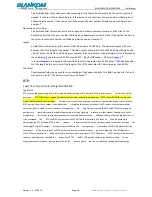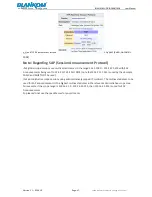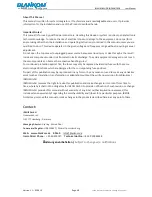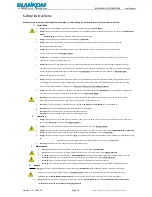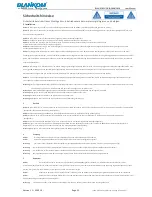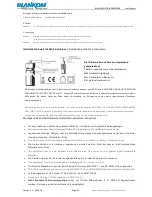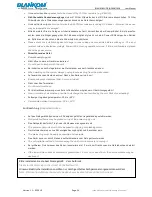
BLANKOM HDE-(4)264B/265B User Manual
Version 1.1 – 02-2019
Page - 44 -
techn. data are subject to change w/o notice!
gateway discovery and group membership reporting. Multicast routers should not forward any
multicast datagram with destination addresses in this range, regardless of its TTL.
Available Formats
XML
HTML
Plain text
Registries included below
Local Network Control Block (224.0.0.0 - 224.0.0.255 (224.0.0/24))
Internetwork Control Block (224.0.1.0 - 224.0.1.255 (224.0.1/24))
AD-HOC Block I (224.0.2.0 - 224.0.255.255)
RESERVED (224.1.0.0-224.1.255.255 (224.1/16))
SDP/SAP Block (224.2.0.0-224.2.255.255 (224.2/16))
AD-HOC Block II (224.3.0.0-224.4.255.255 (224.3/16, 224.4/16))
RESERVED (224.5.0.0-224.251.255.255 (251 /16s))
DIS Transient Groups 224.252.0.0-224.255.255.255 (224.252/14))
RESERVED (225.0.0.0-231.255.255.255 (7 /8s))
Source-Specific Multicast Block (232.0.0.0-232.255.255.255 (232/8))
GLOP Block
AD-HOC Block III (233.252.0.0-233.255.255.255 (233.252/14))
Unicast-Prefix-based IPv4 Multicast Addresses
Scoped Multicast Ranges
Relative Addresses used with Scoped Multicast Addresses
Multicast (as opposed to unicast) is used to send UDP packets from 1 source to multiple
destination servers. This is useful for example for streaming from a satellite/DVB-T receiver to
multiple receiving PCs for playback. Multicast can also be used on the output of an encoder to
feed multiple streaming servers. Multicast only works with UDP and is not possible with TCP due
to the 2 way nature of TCP, most commonly multicast is used with RTP and MPEG2-TS.
A multicast IP address must be chosen according to IANA information, we recommend using an
address in the range
239.0.0.0 to 239.255.255.255
as this is reserved for private use. Using
multicast addresses in the 224.0.0.0 range may clash with existing services and cause your stream
to fail. For more details see
http://www.iana.org/assignments/multicast-addresses/multicast-
addresses.xml
Choosing a UDP port number for multicast streams is also important. Even if you use a different
multicast IP for each of your streams, we strongly recommend using different UDP port numbers
as well. This is because a server and all software running on the server receives ALL multicast
traffic on an open port and extra processing is required to filter out the required traffic. If the
each stream arrives on a different port, the server can safely ignore any traffic on ports that are
not open. Port numbers MUST be chosen so that don't clash with any existing services or
ephemeral ranges. The ephemeral range for Windows Vista, 7, 2008 is 49152 to 65535, for older
Windows it is 1025 to 5000 and for Linux it is 32768 to 61000. For more information on Windows
see
http://support.microsoft.com/kb/929851
Care should also be taken to avoid system ports 0
to 1024. See
http://www.iana.org/assignments/service-names-port-numbers/service-names-
port-numbers.xml
Generally one of the unassigned User Ports (
1024-49151
) should be used, you
can run the
netstat -abn
(as admin under windows) command to see which ports are currently in
use.

